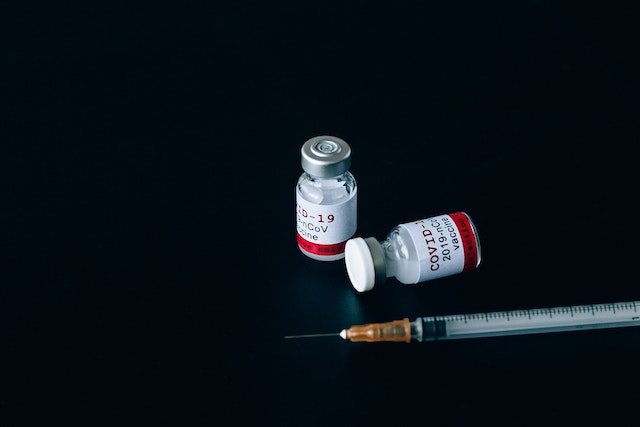
COVID-19 Vaccine Hesitancy Among Women in Delhi
Immunisation programmes need to be tailored to address health concerns of women
Summary: Advocating the need to tailor immunisation programmes for better addressing health concerns of women and encouraging vaccine uptake among them.
Setting the context
The COVID-19 pandemic has been characterised as a black-swan event that swept the world as we know it off its feet. In India, fatality rates rose significantly during the second wave of the COVID-19 pandemic. The number of infections in Delhi witnessed a steep rise wherein cases increased from 2,000 to 20,000 between March 31 and April 16, 2021 and the number of deaths reached up to 4500 per day. While a robust immunisation programme could have significantly reduced fatality rates, unclear public preferences and attitudes towards the COVID-19 vaccine aggravated vaccine hesitancy among the public.
Vaccines play a pivotal role in decreasing morbidity and mortality rates of many infectious diseases worldwide. Despite this, hesitant behaviours and suspicion towards new vaccines is prevalent at the global level.
Vaccine hesitancy refers to the delay in accepting or refusing vaccines despite the availability of vaccination services.
While there are multiple factors which influence such hesitancy, this paper assesses the concept from the metric of three 3C’s: complacency i.e., where the risk of the vaccine preventable disease is perceived as low; convenience i.e., where access to the vaccine is restricted due to lack of physical availability or affordability and confidence i.e., doubts towards the efficacy of the vaccine and low levels of trust in health care authorities.
This descriptive study seeks to identify the factors that contribute to vaccine hesitancy from a gendered lens i.e., from the perspective of an Indian adult woman in the context of COVID-19 vaccines. The report endeavours to make a closer enquiry into concerns, attitudes and other perspectives which shape acceptance, refusal or hesitancy to take vaccines among women in India.
We hope that this study can be further employed by the government and relevant health authorities to better tailor immunisation programmes for women, prioritise uptake of vaccines for them and address their health concerns adequately.
Our study
For the purpose of this study, a questionnaire was designed to assess COVID-19 vaccine related hesitancy and other factors such as knowledge, perceptions and willingness to take the vaccine in the female adult population in Delhi. A total of 1018 women were surveyed across 5 locations i.e., Kotla Mubarakpur, Nizamuddin (Jangpura), Paschim Vihar, Seelampur, and Jamia Nagar with the help of an external agency specialising in the arena of data collection.
The questionnaire’s framework was divided into three parts corresponding to the 3C’s i.e., convenience, complacency and confidence.
Convenience
For the purpose of understanding hesitancy stemming from convenience, the respondents were asked questions such as whether access to the vaccine was restricted due to lack of physical availability, affordability or delivery. The key variables for assessing the convenience levels of women in response to Covid-19 vaccine were aggregated by the descriptive responses to ‘how likely are you to get vaccinated if a centre opens within 50m of your home?’; ‘how easy was it for you to reach the vaccination centre in your locality?’; and ‘how difficult did you find the process of getting vaccinated?’.
Complacency
The key variables for assessing the complacency levels of women in response to Covid-19 vaccine were aggregated by the descriptive responses to ‘do you believe that COVID-19 is life-threatening?’;‘I will take the COVID-19 vaccine only if it is made mandatory for me by the Government’, and ‘I will take the COVID-19 vaccine only if it is made mandatory for me by my employer’.
Confidence
The key variables for assessing the confidence levels of women in response to COVID-19 vaccine were aggregated by the descriptive responses to ‘do you agree that COVID-19 vaccines can be harmful for pregnant or lactating women?’; and ‘how concerned are you about the risk in terms of side effects and serious adverse events from the currently available COVID-19 vaccines?’.
All questions and statements were further compared within sub-groups based on the marital status of the respondents, their level of educational qualification, degree of financial dependence and their religion as well as caste.
Other questions were also aimed at understanding the main sources of information relating to the vaccine and possible determinants which influence respondents to take the vaccine.
Key findings
It was found that the majority of the sample i.e. 88.9% of the respondents were vaccinated at the time of the survey wherein 74.36% women were fully vaccinated.
Convenience
91.55% of the respondents stated that they found it easy to reach the vaccination centre in their locality and 85.97% reported they found the process of getting vaccinated easy. However, a sub-group analysis of descriptive responses indicated that the educational qualification level of women played a part in their perception of ease in reaching the vaccine centre as well as their experience of how easy they found the process of getting vaccinated. It was also observed that the percentage of women who found the process of vaccination easy increased marginally with the level of education.
Complacency
Interestingly, 85.07% of the sample stated that they did not perceive COVID-19 to be a life threatening disease whereas 14.93% indicated that they perceived it as life threatening.
Responses on questions pertaining to mandatory uptake indicated that a mandate by the government is more likely to influence uptake of the vaccination as compared to the uptake being made compulsory by an employer.
Confidence
65.62% respondents stated that they were concerned about the risk in terms of side effects and serious adverse events from the currently available COVID-19 vaccines. Further, 65.23% respondents felt that the vaccine had not been adequately tested prior to launch.
Recommendations and way forward
The recommendations are based on specific findings of the study and are presented under the three themes of convenience, complacency and confidence. To improve convenience, novel methods of delivery of vaccines and information should be explored by the State Governments and municipal level government bodies. To reduce complacency, improvement of access and stable methods of continual dissemination of information should be the focal point of change for the Central Government. To improve confidence, development of an after-care service along with the vaccine delivery process should be one of the areas that the Central Government and the State Governments can look at.
Moving forward, a multi- faceted and cooperative approach must be taken by our society, with equal and active participation of government and non-government bodies. Further, due caution must be exercised to ensure that innovative solutions which cater to the needs and health concerns of differently placed citizens are examined more closely while formulating inoculation policies.






